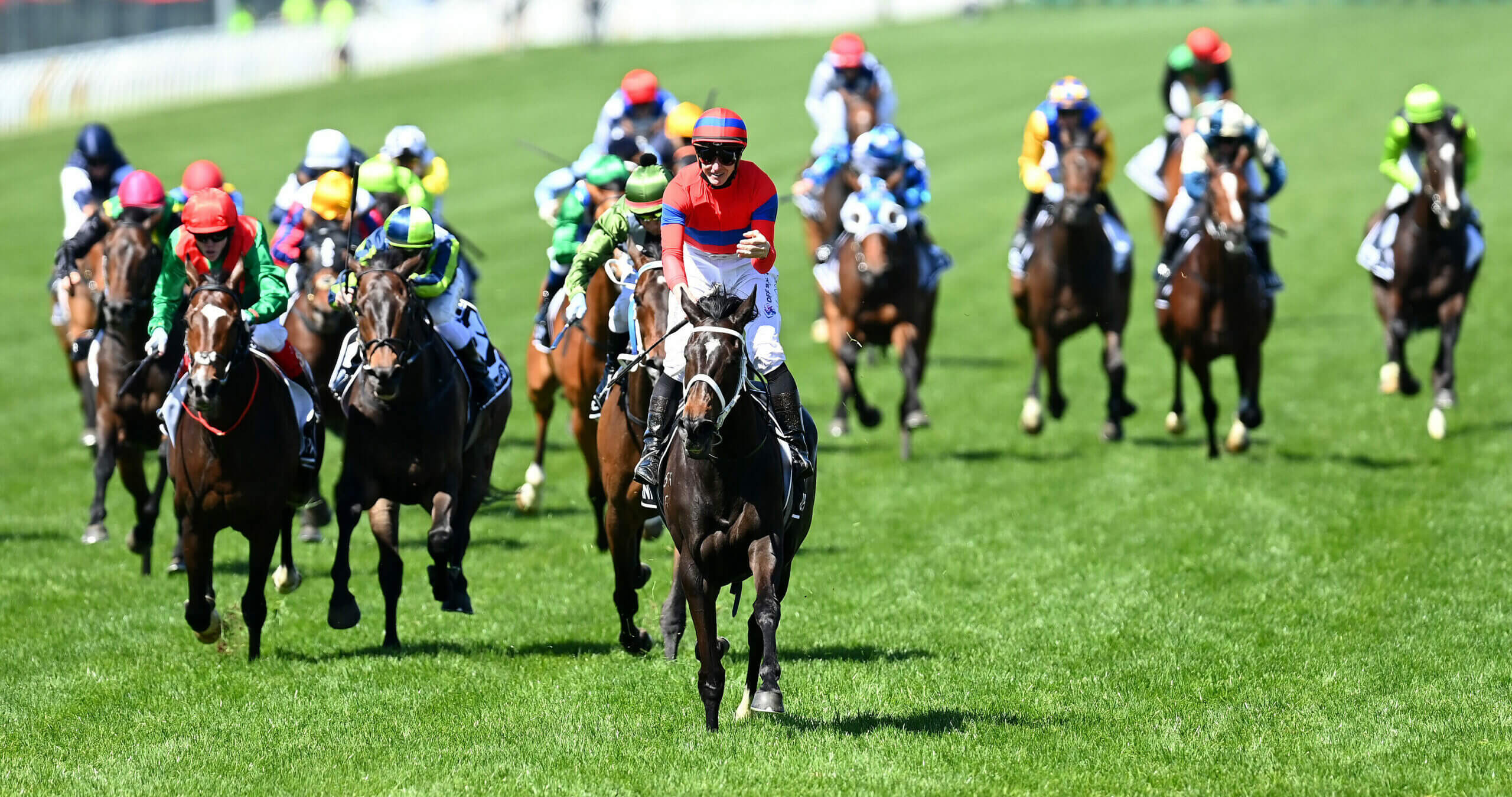Three-Year-Old Races
There are 19 currently Group 1 races for three-year-olds. Given Australia’s disposition for speed, it is surprising that there are just three Group 1 three-year-old races below 1600 metres, all three of which have been upgraded in the past 17 years. Two of those races, the Coolmore Stud Stakes and the Golden Rose, have become the dominant breed-shaping races in the country.
The third is the Surround Stakes for the fillies. Its position at the start of the Sydney autumn makes it a pathway race, not a championship race, making it a natural to cut. In this case, the option the ATC could consider is moving the Flight Stakes – held very close to the Thousand Guineas, a race of the exact same Group One format (1600m for fillies) – to the autumn, giving a fillies championship race at each time of the year.
The other ridiculous clash between Sydney and Melbourne in the three-year-old ranks is the Australian and Randwick Guineas. One of the two has to go.
Then we get to the Derbies and Oaks, which are an historical anachronism whose importance has been undermined further by the ‘internationalisation’ of Australia’s great staying handicaps. Winners of Derbies and Oaks would once become Cup contenders, now most become spring feature seat-fillers as the Cup’s red carpet is rolled out to overseas visitors.
The Derbies and Oaks in Melbourne and Sydney remain, although the ‘championship’ aspect of the Victoria Derby and Oaks would certainly be enhanced by reducing them back to 2000 metres.
Only two of the South Australian and Queensland classics can make the cut. Perhaps the option for those states is to stage one Group 1 staying race for three-year-olds each, making a feature 3YO Classic championship encompassing both sexes.
Demote: Surround Stakes or Flight Stakes, Randwick or Australian Guineas, Australasian Oaks or South Australian Derby, Queensland Oaks or Queensland Derby
Net: Minus four
Filles and Mares Races
There are five Group 1 races specifically for fillies and mares in Australia. To reduce numbers, you would demote the Robert Sangster, which has been a Group 1 race since 2005, but it has been historically the weaker of the two end-of-season Group 1 mares races, the other being the Tatts Tiara. In a reduced Group 1 calendar with fewer elite races, one of the two would have to be sacrificed.
The Sydney autumn hosts two Group 1 races for fillies and mares over similar distances and that means one or the other doesn’t fit into the ‘championship’ criteria befitting a Group 1 race. The Coolmore Classic or the Queen Of The Turf may have been useful for stuffing pedigree pages over the years, but they lack a clear distinction and one needs to go:
Demote: Robert Sangster Stakes and the Coolmore Classic or the Queen Of The Turf
Net: Minus two
Open Age Sprint Races
There are 14 Group 1 races contested in open company between 1000 metres and 1300 metres in Australia each year. While Australian sprint racing is the envy of the world, that is far too many to retain the elite nature intended for the status.
First of all, we’d have to upgrade The Everest. Then there are three other sprints which clearly fit the Championship criteria, the VRC Sprint Classic (now the Champions Sprint), the Newmarket Hcp and the TJ Smith.
Of the rest, in order to clear out the calendar, five would need to make way. The first to go would be the Moir Stakes at Moonee Valley. It is a lead-in race for the Manikato. The Canterbury Stakes, over 1300 metres early in the Sydney autumn is another one which doesn’t fit that criteria and it was only upgraded in 2013.
The William Reid Stakes at Moonee Valley is an afterthought to the triple crown of Melbourne Group 1 sprints while the Kingsford-Smith Cup in Brisbane is the third best sprint race in the state, well short of ‘Championship’ status.
This is where the cut gets harder. You either have to demote the Doomben 10,000 or The Goodwood, both historically important sprints. It’s a close call, but the Doomben 10,000 would be most in danger as Queensland already has a feature winter sprint, the Stradbroke (although it is over 1400 metres).
Demote: Moir Stakes, the Canterbury Stakes, the William Reid Stakes, the Kingsford Smith-Cup, one of the Doomben 10,000 or The Goodwood
Promote: The Everest
Net: Minus four









